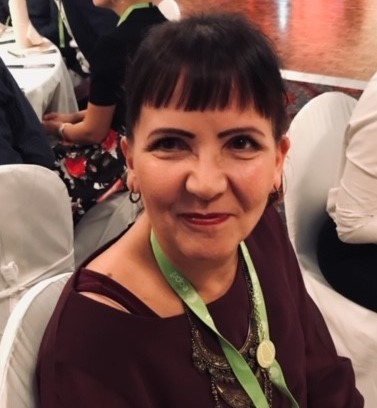
Kaarina Marjanen
Tampere University, Finland
Dr. Kaarina Marjanen is a specialist of (early childhood) music education, with focus interests for music and language integration and behavior, artistic learning in a dialogue with multisensory experiences and wellbeing, and various aspects for learning, including the possibilities to create virtual learning models, supported by the experiences of the arts. Her education and professional qualifications include those of a kindergarten teacher (1980), an early childhood music teacher (1995), and a one subject music teacher (Master of Arts, 1999). Kaarina Marjanen is a Licentiate of Philosophy (2005) and a Doctor of Philosophy (2009). She is a member of EAPRIL, SIG Prime, CREAT, ISME, ECME, CCE Finland, and Teosto/NCB Finland. Currently Kaarina Marjanen works as a senior university lecturer at Tampere University, Finland (3.8.2020 -).
Her working life career includes experiences in many Finnish universities, with international collaboration, focused on professional education development. Development of a model called “Multisensory Musical Design (MMD)” (http://doi.org/10.18848/2326-9944/CGP) has been Kaarina’s latest interest. Her approach to musical integration derives from learning processes, with multimodal sense-based connections, emotions and transversal nature, as a ground for arts-integration. Presently Kaarina is constructing research approaches within her networks, to defense the status of music in Western societies, as a tool for higher education, to gain evidence of power of music in learning and education, as defined in early childhood.
Kaarina Marjanen has been observing music in various professional training programs, and as a bridge between various training programs, to serve the best of the culture and humanities. The deepening experiences of a creativity project for early childhood and primary school teachers in India (2014), and various education export and collaboration projects, besides the EMP-L, such as the Peers, have supported her steps towards the current multi-scientific and arts-integrated direction, starting from education fostered by music, and learning musically. As a member of the International Society of Music Education (ISME), Kaarina was responsible of theme "Cross Curriculate and Integrated Music Practices" at ISME 2020 scientific committee. Her learning-focused interests have been strengthened via the active participation at EAPRIL, and the founding of Cloud 9, “Sounds & Arts in Transversal Learning”, together with her colleagues Markus Cslovjecsek and Hubert Gruber in 2016. Currently, Kaarina leads the cloud with Dr. Hubert Gruber from Austria.
Further information:
https://orcid.org/0000-0003-4563-6742
https://eapril.org/Cloud-9
.
Title
The Multisensory Musical Design: Inspired by Faces, Spaces and Timelines in Education
Abstract
Music as an emotional capacity, connected with multisensory experiences, creates an innate human resource for well-being, learning, and interaction, to inspire sound environments, and open possibilities for the development of education, with purposes and meanings for society and culture. Multisensory Musical Design (MMD) is a musical cornerstone to recreate human-oriented education, and to better access the European Quality Framework (2008). Sounds and music create a natural power for human behavior, observed in faces, spaces, and timelines. Music and arts may help us breathe better, and cultural phenomena and societies will be thus recreated. Musical sounds for multidisciplinary dialogues may be defined in music as holistic expressions. The emotional dimension with flow (Csikszentmihalyi 2008), and the comprehension of knowing through body, mind and cognition, supported with experience, create a ground to understand music with tacit knowledge (Polanyi 1983) as a foundation for human nature, starting from the innate need and ability towards a need for beauty.

To be announced